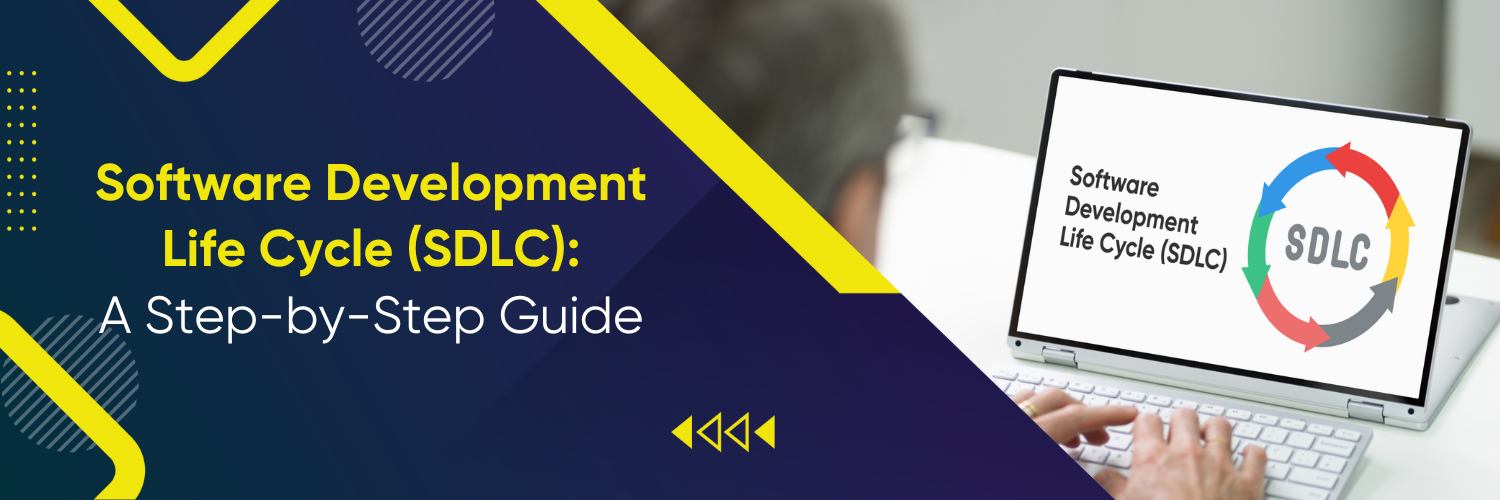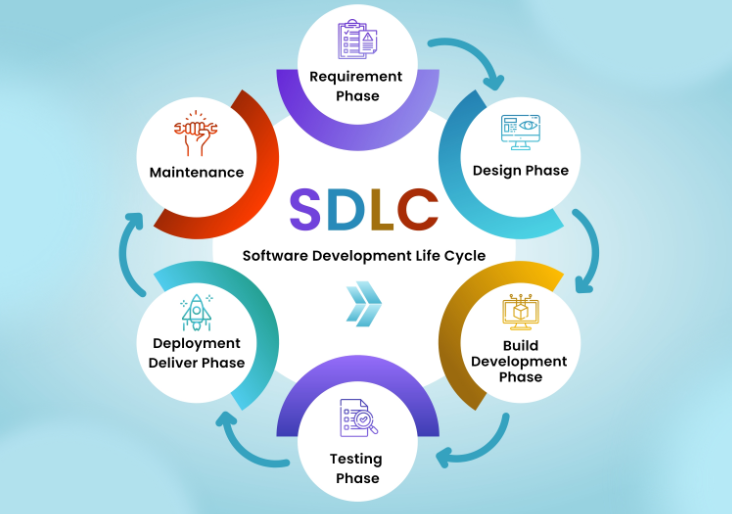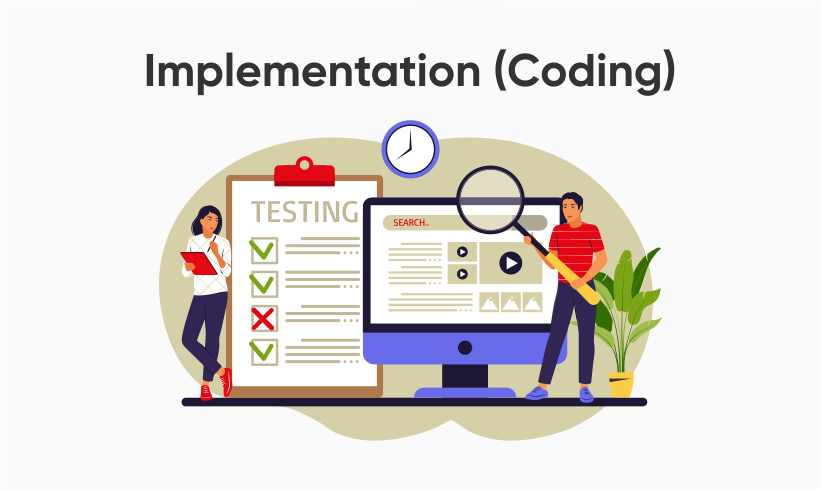What is SDLC?
The Software Development Life Cycle, called SDLC, refers to the systematic process guiding software application creation, maintenance, and eventual decommissioning. At its core, the SDLC lays down a structured framework that software developers and project managers adhere to, from conceptualising a software idea to its release into the market and subsequent updates.
There are seven primary stages of the modern system development life cycle. Here’s a brief breakdown:
- Planning Stage
- Feasibility or Requirements of Analysis Stage
- Design and Prototyping Stage
- Software Development Stage
- Software Testing Stage
- Implementation and Integration
- Operations and Maintenance Stage
The importance of the SDLC in software development cannot be overstated. By ensuring that each development phase is completed rigorously and systematically, SDLC promotes the production of high-quality software, helps manage time and resources efficiently, and reduces the likelihood of errors or faults in the final product.
How to Choose the Right SDLC Model for Your Project
Choosing an SDLC model is pivotal in guiding the software development process. Here’s how you can pick the right one:
a. Understand the Project Requirements
Agile or iterative models might be suitable if the requirements are unclear and expected to evolve. The waterfall model might be appropriate if the requirements are well-defined and unlikely to change.
b. Consider the Project Size and Complexity
Small projects can benefit from lightweight models like the incremental model. Large projects might need more structured approaches like the spiral or V-model.
c. Factor in the Risk
If the project has high associated risks, the spiral model, which focuses on risk analysis, might be beneficial.
d. Client Involvement
Agile or iterative models can be chosen if the client wants regular updates and wishes to be involved throughout the development process.
e. Budget and Time Constraints
Rapid Application Development (RAD) can be suitable for projects that need a quick market launch. For projects with strict budgetary constraints, avoiding models like spiral (which can be expensive due to frequent evaluations) can be wise.
f. Team’s Expertise
Familiarity with a particular SDLC can significantly influence the project’s success. Choose a model your team is comfortable with unless there’s a strong case for another method.
How to Manage Your SDLC Projects Effectively
a. Clear Requirements Gathering: Understand and document the project requirements. This avoids confusion later.
b. Regular Communication: Facilitate clear communication channels among developers, stakeholders, testers, and others involved.
c. Milestones and Deadlines: Set clear milestones to track progress.
d. Testing: Ensure regular and rigorous testing to catch and rectify errors early at every stage.
e. Feedback Loop: Incorporate feedback from all stakeholders and make necessary iterations.
f. Documentation: Proper documentation ensures that there is a reference point at all stages of the development process.
g. Resource Allocation: Ensure that resources (both human and technical) are adequately allocated and available.
h. Continuous Improvement: Always look for ways to improve the development process.
The Future of the SDLC
While the core principles of SDLC are likely to remain, the future will see:
a. Increased Automation
More stages of the SDLC, especially testing and deployment, will become automated, leading to faster software releases.
b. Develops and Continuous Integration/Continuous Deployment (CI/CD)
An increased emphasis on integrating development and operations to ensure software is developed and released faster and more efficiently.
c. Artificial Intelligence in SDLC
AI can assist in gathering requirements, predicting potential errors, and even generating code.
d. Shift Towards Microservices
Instead of monolithic architectures, there’s a move towards developing smaller, independent microservices that can be updated and deployed independently.
e. Enhanced Security Protocols
With increasing cyber threats, incorporating security at every stage of SDLC (DevSecOps) will be crucial.
f. Remote and Distributed Development
Cloud-based tools and platforms will become more prevalent, allowing distributed teams to work seamlessly together.
Core Phases of the SDLC
1. Requirement Analysis
The very foundation of any successful software project lies in thoroughly understanding and documenting its requirements. This phase involves intense communication between stakeholders, developers, and clients to ascertain the software’s objectives, functionalities, and constraints. This information is meticulously documented as a reference point throughout the software’s development. Effective communication is paramount in this phase, ensuring that all parties are aligned, thus preventing costly misunderstandings or reworks in later stages.
2. Planning
Once the requirements are solidified, the planning phase commences. Here, project managers and team leads establish milestones, set deadlines, and outline the project’s timeline. Furthermore, this phase also involves determining the necessary human and technical resources. Proper budgeting ensures financial resources are optimally utilised, while resource allocation provides the right personnel with the required skill sets to be assigned appropriate tasks.
3. Design
At this juncture, the theoretical aspects of the project start taking a more tangible form. Architects and designers draft detailed specifications defining the software’s appearance and function. Emphasis is placed on user experience (UX) and user interface (UI) design, ensuring that the end product is functional but also user-friendly, intuitive, and aesthetically pleasing.
4. Implementation (Coding)
The actual coding of the software begins during the implementation phase. Developers select the most suitable programming languages and tools based on the project’s requirements. During this phase, adhering to coding best practices is crucial, ensuring the code is efficient, scalable, and maintainable.
5. Testing
Before any software sees the light of day, it undergoes rigorous testing to identify and rectify bugs or inconsistencies. This includes various types of tests such as Unit Testing (testing individual components), Integration Testing (testing combined components), System Testing (testing the complete system), and User Acceptance Testing (ensuring the software meets user requirements). Regular and meticulous testing ensures the final product is of the highest quality and free of significant issues.
6. Deployment
Upon successful testing, the software is ready to be deployed. Depending on the software type and intended audience, deployment can occur in various environments, ranging from a company’s internal servers to cloud platforms. The transition from a testing environment to a live setting is handled carefully to avoid disruptions or potential issues.
7. Maintenance and Monitoring
Post-deployment, the software is not left to its own devices. Continuous monitoring tools and techniques are employed to ensure the software runs optimally. Additionally, as user needs evolve or potential issues arise, regular updates, patches, and improvements are rolled out to keep the software relevant and functional.
Popular SDLC Models
Waterfall Model
The Waterfall Model is a sequential SDLC approach where each phase is completed before the next one begins. While this model offers the advantage of clear, linear progression and easy-to-understand stages, its rigidity can be a drawback, especially if there’s a need for changes or iterations in earlier stages after progression.
Agile Model
Adopting a more flexible and iterative approach, the Agile Model promotes frequent feedback loops with clients and incremental improvements. This adaptability is its strength, allowing changes to be incorporated easily. However, it may require more client involvement and can be resource-intensive.
Spiral Model
The Spiral Model emphasises risk analysis and involves repeating the SDLC phases in spirals, constantly refining the product. Its iterative nature and focus on risks make it suitable for complex projects. On the downside, it can be more time-consuming and expensive.
V-Model (Validation and Verification)
Development and testing activities run in parallel in the V-Model, emphasising validation and verification. It ensures that every development stage has a corresponding testing phase. While this provides thorough testing, changes can be costly if introduced late.
Conclusion
The Software Development Life Cycle is the backbone of the software industry, ensuring systematic, efficient, and quality software production. If you’re keen to amplify your business’s digital journey, don’t navigate these waters alone—partner with Ubique Digital Solutions, a software consultant and integration specialist. Let our expertise guide your software projects to fruition. Reach out to us today.
FAQs
Q: What Is the Primary Goal of SDLC?
The primary goal of SDLC is to produce high-quality software that fulfils user requirements and is delivered within time and budget constraints, ensuring optimum business value.
Q: How Often Should the SDLC Process Be Updated?
The SDLC process should be revisited and potentially updated whenever significant technological trends, team dynamics or expertise changes, or project requirements exist.
Q: Can You Mix Different SDLC Models for a Project?
While elements from various SDLC models can be incorporated into a project, it’s essential to maintain a consistent approach to avoid confusion and ensure systematic progression.
Q: Why Is Testing Such a Critical Phase in SDLC?
Testing is crucial in SDLC because it identifies and rectifies potential issues, ensures that the software aligns with user requirements, and guarantees that the end product provides a seamless, bug-free user experience.






















